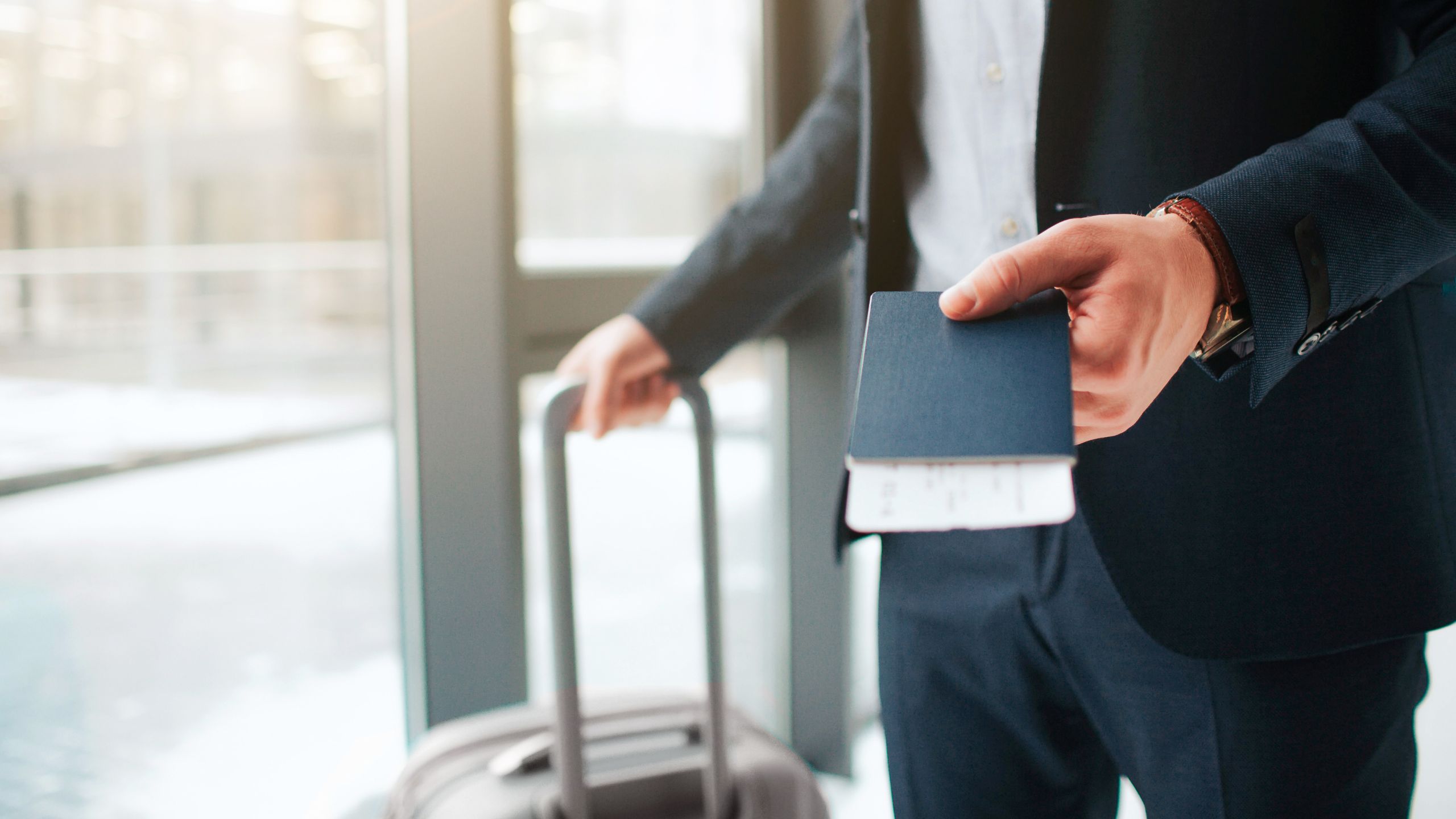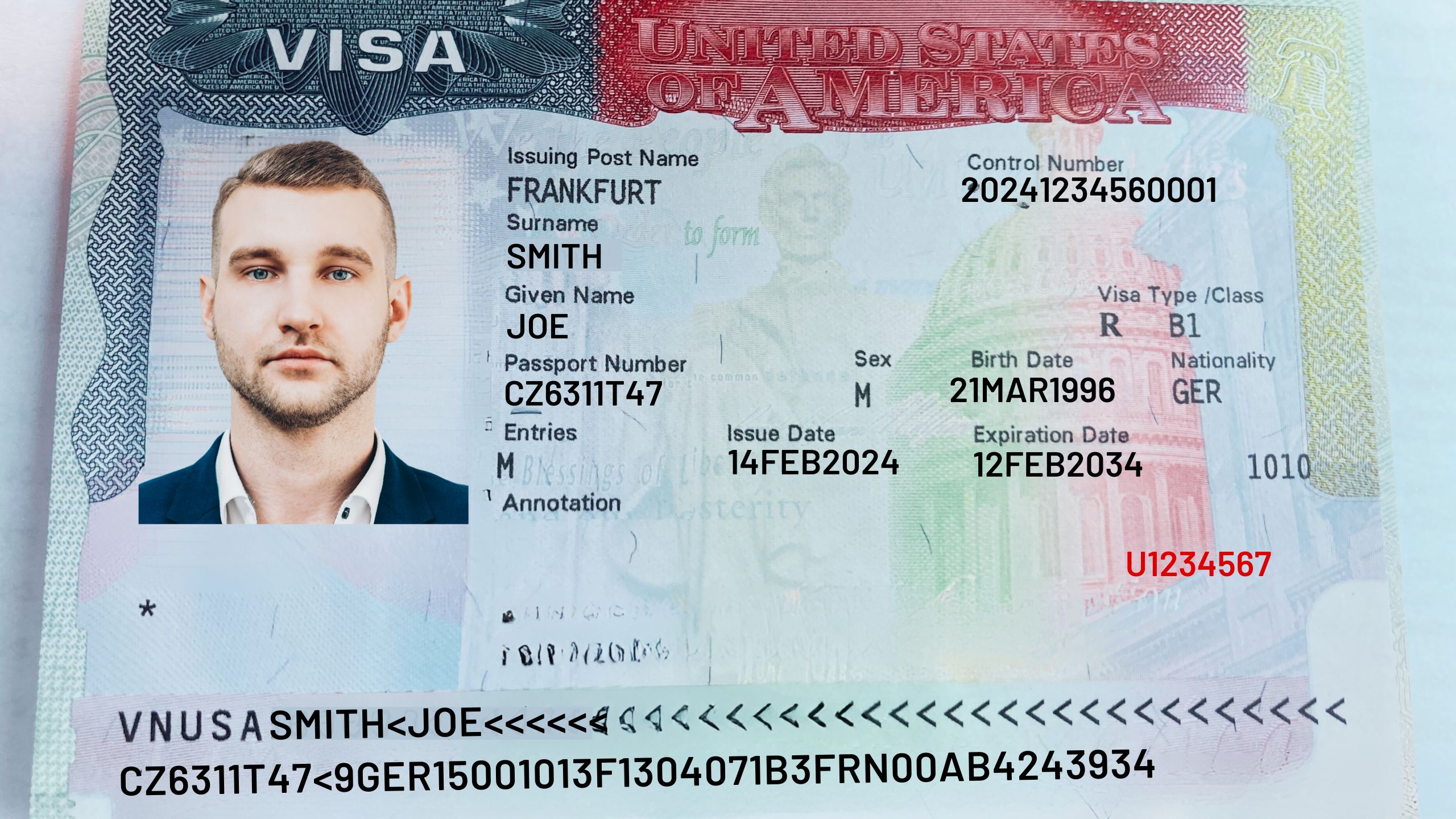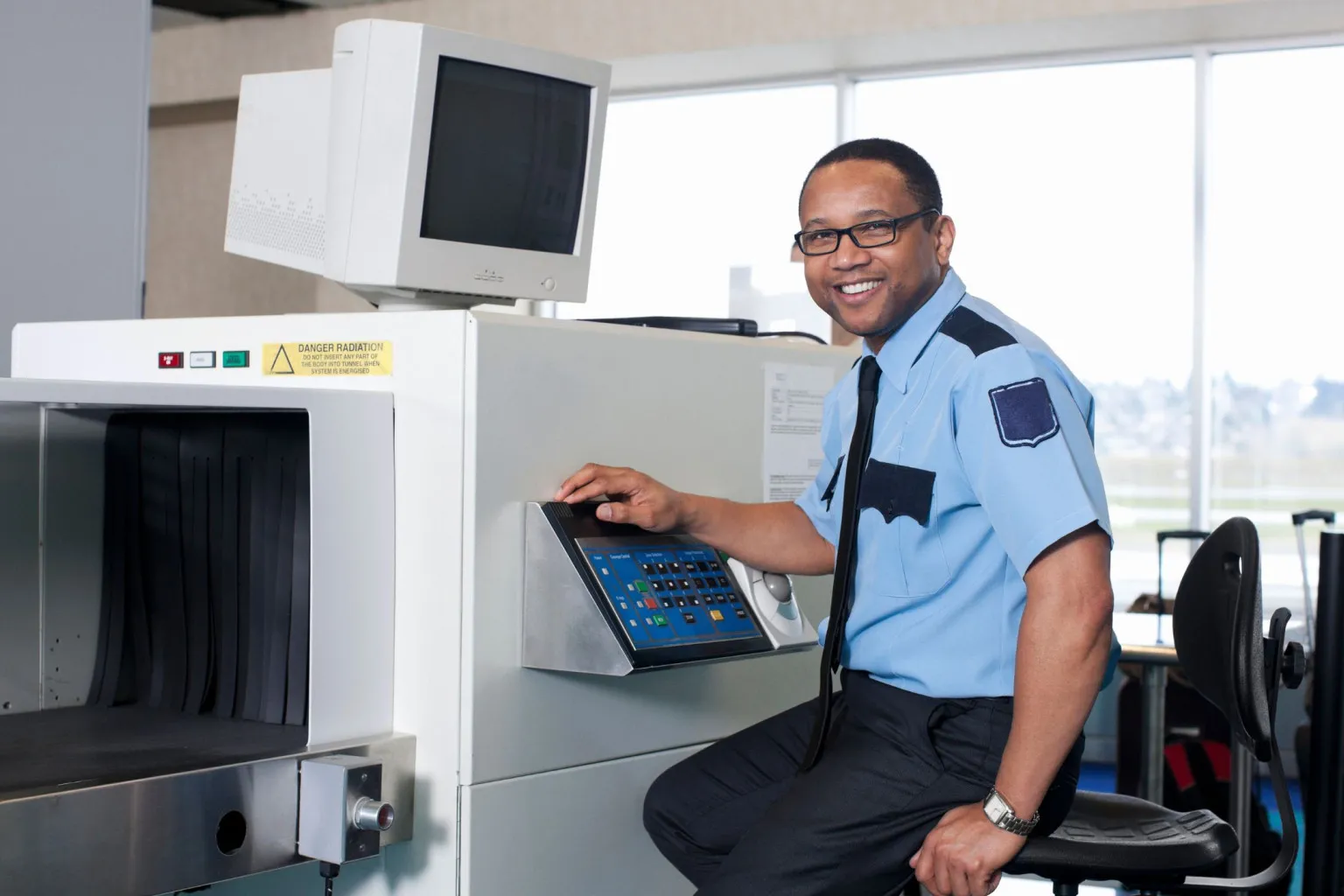American cities like New York City, San Francisco and Chicago are among the top destinations for business travelers. But who needs to make a visitor visa and what are the individual application steps and requirements? We inform about the so-called business visa and assist you with the B-1 application process if desired.
Visa category: visitor visa
Target group: business travelers; persons, who cannot use ESTA
Validity: generally 10 years
Length of stay: max. 180 days per entry, renewable only once for another max. 180 days
Characteristics: working, studying, immigratin etc. not allowed
The B-1 visa is a common nonimmigrant visa for the USA which allows temporary stay in the United States and limited professional activities. The official name of the visa category is B-1 Temporary Business Visitor.
With a B-1 visa you may carry out certain business activities, which are not not classified as work. These include, for example

A B-1 visa is required in the following cases:
B-1 visa holders are not allowed to work productively under any circumstances. Alternatively, they should consider applying for a work visa for the USA. Persons who have to spend longer periods of time in the United States for business reasons or who have to enter the country frequently should also consider applying for a regular work visa (e.g. E or L visa).
In individual cases, it can be examined whether alternatively the visa free entry with ESTA can be used for limited business purposes (= Business Visa Waiver). The so-called Visa Waiver Program allows certain nationals to stay in the US for up to 90 days without having to apply for a visa in advance.
For the B-1 business visitor visa, the following requirements apply:
As a rule, those who hold a B visa are not allowed to engage in productive work or learning activities. However, under strictly defined conditions, a B visa may be issued exceptionally for persons engaged in productive employment or further education.
The following special cases are not independent visa categories. In the online visa application DS-160 the special cases are considered and applied for as a regular B-1 visa.
The US consular officers only make a note in the annotation field of the visa to indicate which B-1 subcategory is involved.
Companies that sell machinery or production equipment to the US can, under certain conditions, have their assemblers travel to the USA to fulfill service orders, i.e. after-sales services. For example, assembly work, installations, maintenance work and training may be carried out on site by US personnel.
In certain cases, it may also be possible to apply for a temporary project visa for professionals.
Under certain conditions, the B-1 category can be used for short in-house trainings and further education.
With a B-1 visa, business travelers may officially stay in the United States for up to 180 days for multiple entries or consecutive days. The maximum length of stay in the USA does not apply per year but per entry.
However, the exact length of stay is determined individually by the US border officers each time you enter the country and can be viewed online in the electronic I-94 or can be seen on the entry stamp in your passport.
The maximum status, e.g. permitted length of stay, of 180 days can be extended in the USA by submitting a status extension application to the US immigration authority USCIS for a further maximum of 180 days (i.e. to a maximum of 365 days).
US business travelers must leave the United States no later than the date of departure noted on the entry stamp or electronic I-94 in order to avoid the risk of an overstay.
Each time you travel to the United States, you will receive a new status at the border crossing. As long as the B-1 visa is valid, foreign nationals with the visa may request entry at the border.
As a rule, B-1 visas are issued for 10 years. This means that if travelers are frequently in the USA for business reasons, they do not need to apply for a new visa for re-entry.
However, the visa for business trips to the USA can also be issued for a shorter period. This depends in particular on the nationality of the applicant.
The validity of the B-1 visa does not mean that you are allowed to stay in the USA for the same length of time. The validity period of the visa does not correspond to the permitted length of stay in the USA, i.e. you must differentiate between the validity of the US visa and the length of stay or residence status.
The validity period of the visa refers to the period between the issue date and the expiration date during which applicants can apply for entry at the border. The period of validity of the visa is determined by the US consulate or US embassy where you submitted the application and can be seen from the expiration date on the visa.
Alternatively, business travelers staying in the United States for no more than 90 days may be able to participate in the Visa Waiver Program (Visa Waiver Program) and therefore do not need to apply for a visa.
Before processing the visa application, our visa specialists check with all customers whether entry via ESTA is possible or whether a B-1 business visa is required. The overlaps between ESTA or B-1 visa are large, they must nevertheless be tailored to the individual reason for the trip and the background of the travelers.
The visa fee for the B-1 visa is 166.50 € (185 $) per applicant. This general application fee of the US consulates or US embassies must be paid by all applicants and is neither refundable nor transferable to other persons.
The processing fee can be paid by online bank transfer, online payment by debit card or cash payment at a bank.
As a rule, this fee can be used to make an appointment within one year of the payment date.

Furthermore, additional costs may be incurred for certain B-1 applicants:
You can find more information about the different visa fees, other possible costs and the current payment methods on our fees page.
It is important to note that applying for a B-1 visa requires a thorough understanding of the process and careful planning of the steps required. This includes selecting the appropriate visa type according to the purpose of the trip, the correct completion of the application forms and the preparation for the visa interview, there are many important aspects to consider.
The following section explains the individual steps of the B-1 visa application process and provides a guidelines for a successful application.
Applicants for a B-1 visa between the ages of 14 and 79 usually have to go through the consular application procedure. This means that the online form DS-160 is usually filled out for the B-1 visa and the visa is issued as part of a personal interviews in a responsible US representation (US consulate or US embassy) in the home country.
All necessary requirements and required documents for B-1 visa applicants must be fulfilled or available before submitting the B-1 visa application.
Based on our many years of experience in processing B-1 visa applications, we recommend at least 6 to 8 weeks for processing the application until receipt of the B-1 visa.
The appointment situation in the US consulates / US embassies in particular varies greatly and is sometimes dependent on the time of year, for example.
After your B-1 visa application has been reviewed and approved, your passport will be retained for visa issuance. Approximately one week after the visa interview, your passport and B-1 visa will be mailed to you.
You may be exempt from the personal interview requirement. In this case, the processing time for the postal application is approximately 2 weeks.
Attention: In some cases, a further security check (Administrative Processing), which can take several months. This can considerably delay the B-1 visa application.
The following steps are required to apply for a B-1 visa for the USA:
The first step in applying for a B-1 visa for the USA is to fill out the electronic visa application form DS-160 on the Website of the US Department of State.
The online application form asks for detailed information about the applicant and the planned stay in the USA. To complete the DS-160 form, the following documents should be kept ready:
A few days after submitting your DS-160 form, it is possible to check the status of your visa application online.
Did you know that the professional processing and submission of your DS-160 form is part of our range of services?
Create a Visa profile on the website of the Visa Information Service which is used to process B-1 visa applications.
Here you can also pay the visa processing fee and make an appointment for the visa interview.
If you use our US Visa Service, we will create the required online profile, advance the consular visa application fee and arrange the appointment for the personal interview with the US consular officers.
Show up on day of the interview personally in the US consulate or at the US embassy. Your documents will be checked there and you will be interviewed by the consular officers.
The following documents must be prepared and brought along for the appointment at the US consulate or the US embassy:
Be prepared to be asked questions about your visa application, your planned stay in the United States and other relevant topics.
Typically, B-1 visa applicants will be informed at the end of their appointment at the US consulate or US embassy whether or not their visa application will be approved.
Our visa consultants will prepare you optimally for this important appointment and ensure that you have all the necessary documents for a smooth visa interview.
If your B-1 visa application is approved, you will receive your passport with the B-1 visa returned by post or can make an appointment for collection.
The B-1 visa contains a variety of information that identifies the visa holder and establishes his or her rights and restrictions while in the United States.
It is important that you check this information carefully and ensure that you meet the requirements of your planned stay in the USA.

Here are some of the dates and details that can be found on a US visa:
The foreign missions of the United States, i.e. the US consulates and US embassies, are responsible for issuing US visas.
Consular officers usually decide whether a visa for the USA will be granted on the day of the interview. Applicants for a B-1 visa usually find out during their appointment whether or not they will receive the visa.
You can check the status of your US visa application online. There are usually 3 options:
Your B-1 visa was granted verbally by the US officers and is now in the final processing stage.
As soon as the B-1 visa has been stamped in your passport and issued, the passport with the corresponding US visa will be sent to you by mail.
In certain cases, US consular officers decide not to issue the B-1 visa immediately and deny the visa under Section 221(g) of the Immigration and Nationality Act (INA). The application for the B-1 visa requires an additional security check and further processing steps (Administrative Processing). If necessary, further documents or information will be requested from the applicants.
If the US officers conclude that you do not qualify for the B-1 category, your B-1 visa to the USA will be denied. A reason for the denial is not required, but applicants usually receive further instructions on the day of the interview or a denial letter after a processing period.
The grounds for refusal vary depending on the visa category and applicant (e.g. presumption of intent to immigrate, presumption of illegal employment, incorrect application documentation).
After a visa refusal it is generally possible to submit a new B-1 application at any time. Theoretically, there is no waiting period for applicants until the next application.
In our experience, it is only advisable to reapply in the same category if the conditions or circumstances have changed since the first application and you are able to provide evidence of these changes or new circumstances.
It is not very promising to apply for a new visa if you do not meet the requirements of the respective visa category (intention to return to your home country, financial means, specialized professional knowledge, etc.). In practice, a new B-1 visa can often only be successfully applied for after several months or even years.
After a visa refusal, applicants must start the visa application process all over again. Incidentally, no appeal can be lodged against a visa refusal.
There are many reasons why a visa application may be rejected and sometimes even minor errors during the application process lead to a rejection.
The consequences of a denied B-1 visa for the applicant vary depending on the reason for the denial.
Although US authorities are not obliged to explain the reasons for a visa refusal, it is possible to ask politely during the interview at the US consulate or US embassy. This information may be helpful if you intend to reapply for the B-1 visa.
We recommend that you prepare your application for a renewed B-1 visa carefully and convincingly: Choose the appropriate category, fill out the DS-160 online form correctly and completely, and collect valid supporting documents.
We advise you on the choice of the appropriate visa category and take over the complete processing for you or your company.

Many applicants mistakenly assume that an approved US visa guarantees them entry into the United States. In fact, a B-1 visa in the passport does not automatically guarantee entry to the USA. A US visa is not legally a residence permit, and even with an approved visa there is no guarantee of entry. A valid visa for business travel only entitles the holder to apply for entry into the United States at the border crossing (e.g. airport).
The decision as to whether you are allowed to enter the country ultimately lies with the border officers who check the B-1 visa on arrival in the USA. The U.S. Customs and Border Protection officers decide on the duration of the stay and whether entry is granted. This may also mean that you might not be allowed to enter the country and have to return to your home country.
If you have been permitted entry, it is advisable to check online in the I-94 or on the entry stamp in your passport when your legal stay in the USA expires.

Tip: With Global Entry, pre-approved and biometrically approved individuals can carry out entry checks independently and automatically at almost all major US airports. This allows business travelers to avoid long queues and enter the United States more quickly.
First of all, the following principle applies: The validity period of a visa cannot be extended, regardless of the visa category. This is considered a new application. However, it is possible to apply for a new B-1 visa in good time before or after it expires. A B-1 visa can be applied for several times.
It is important to know that the remaining validity of your old B-1 visa will not be transferred to the new visa. In addition, an earlier visa issuance does not guarantee the approval of a new visa. All required documents and evidence must be resubmitted to the US consulate or US embassy.
It is therefore advisable to prepare the B-1 application carefully and to ensure that all necessary documents are complete in order to avoid possible delays or rejections.
When reapplying for a B-1 visa, it is also important to take into account the different processing times of the respective US consulates or US embassies and to allow sufficient lead time.
A simplified procedure may be possible for the new application. You may qualify for a postal renewal and thus be able to avoid the interview appointment. You can find more information on this under the Interview Waiver Program.
Spouses, domestic partners and child(ren) of B-1 holders may travel with them to the USA. If family members do not participate in the planned business activities, they would be subject to a B-2 visa for tourists. Anyone wishing to accompany a B-1 visa holder to the United States will therefore require a separate B-2 visa. Citizens of Visa Waiver Program countries can of course also apply for visa-free entry with ESTA for short visits (up to 90 days).
A derived B-1 business traveler visa for family members does not exist.
Please note that both the B-2 visa and ESTA are only for accompanying a spouse or parent. Taking up work or attending school or university is not permitted.

For international travelers wishing to travel to the United States, both the Electronic System for Travel Authorization (ESTA) as well as the B visa are important entry options. Both allow you to stay in the USA for identical purposes, but also have significant differences.
The choice between the two options depends on the individual travel destinations, the planned length of stay and other specific requirements. Before traveling to the USA, it is advisable to inform yourself thoroughly about the respective requirements and restrictions in order to ensure a smooth and legally correct trip.
Simmilarities:
Differences:
The B-1 visa is for business purposes. However, when B visas are granted, a combined B-1 / B-2 visa is often issued, which means that you can also travel to the USA as a tourist. Further information on this can be found on our overview page for US visitor visas.
For private stays in the USA of up to 90 days, it may be possible to apply for an ESTA travel authorization. The ESTA application can be submitted quickly and inexpensively compared to a visa application.
Wir und unsere Partner nutzen Cookies, um personenbezogene Daten wie z.B. Browsing-Daten zu speichern und abzurufen, um z.B. Inhalte und Werbung bereitzustellen und zu personalisieren sowie die Verwendung der Website zu analysieren und das Benutzererlebnis zu verbessern. Sie erfahren mehr über die Zwecke, für welche wir und unsere Partner Cookies einsetzen, wenn Sie unten auf den Button „Cookie Einstellungen“ klicken. Hier können sämtliche Einstellungen auch geändert werden. Nachträglich kann man jederzeit seine Cookie-Auswahl überdenken oder seine Einwilligung widerrufen, indem man auf den Link zu den Cookie-Einstellungen im Footer unserer Webseite klickt. Beachten Sie bitte, dass das Blockieren einiger Cookie-Typen unsere Möglichkeiten zur Bereitstellung von auf Ihre Interessen zugeschnittenen Inhalten haben kann oder einige Funktionen der Webseite nur eingeschränkt zur Verfügung stehen.
Durch klicken auf “Alle Cookies akzeptieren” stimmen Sie unserer Nutzung und der Weitergabe Ihrer Daten an unsere Partner zu.